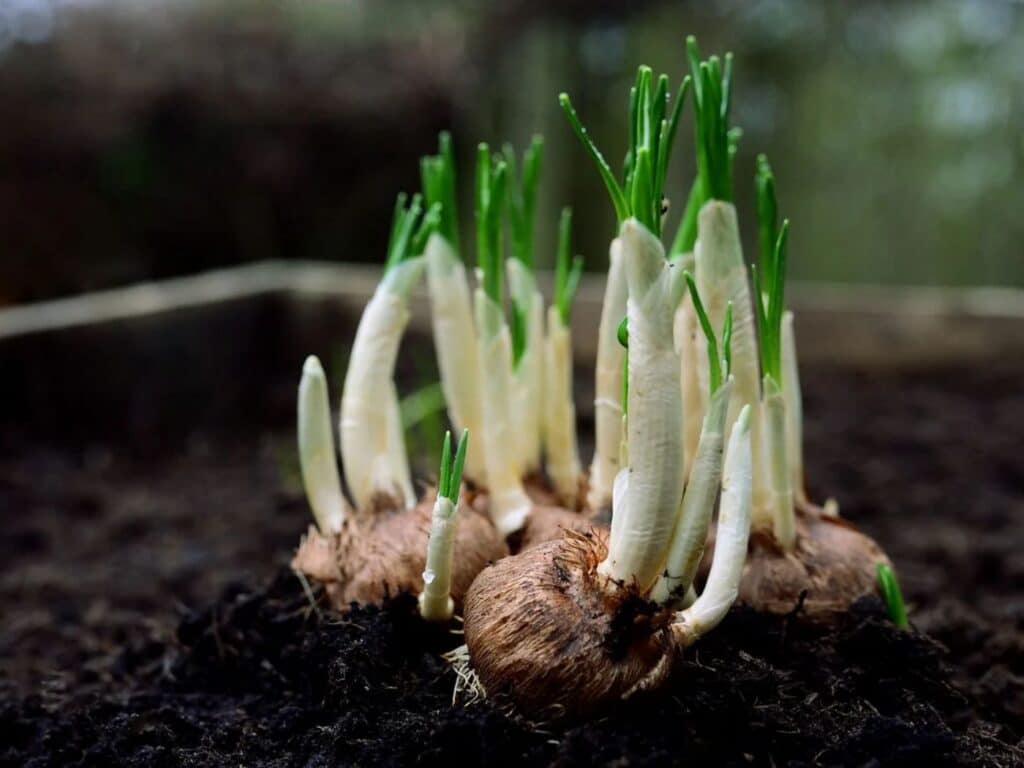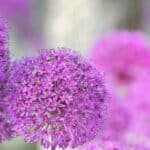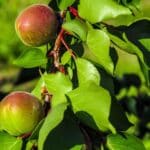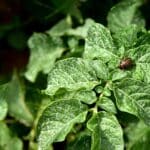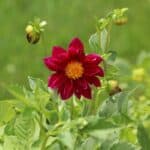Onions (Allium cepa) are some of the most valuable plants. With their edible bulbs and leafy greens, these plants are more than just tasty in many recipes. They can also be used to repel pests that might attack some of the other plants in your vegetable garden.
Onions are terrific companion plants for many fruit and vegetable types, like peppers, cabbages, kale, strawberries, melons, and more. Some ornamental onion varieties can also be used to protect flowering plants in ornamental gardens.
This guide will take a quick look at some of the best companion plants to pair with onions.
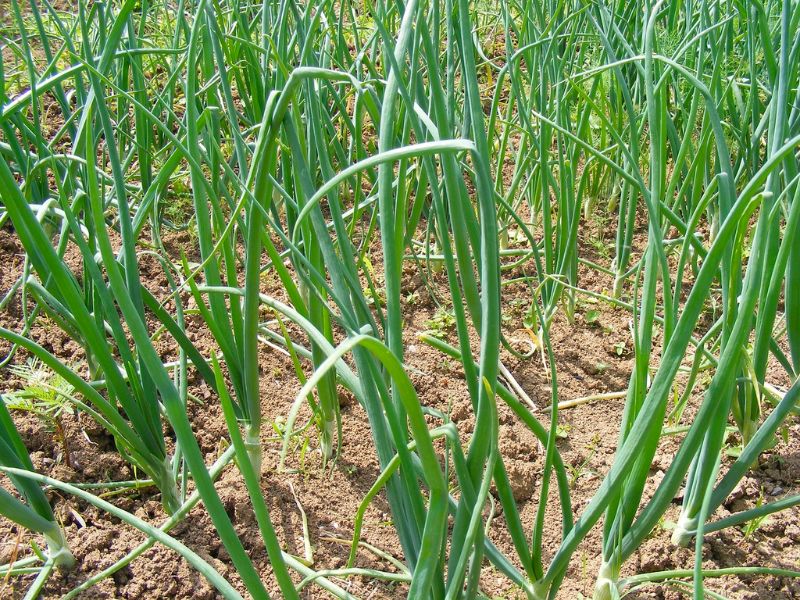
What To Plant With Onions
Onions are terrific for companion planting because their strong scent is a natural pest deterrent for insects like aphids, Japanese beetles, flea beetles, the carrot fly, cabbage worms, cabbage maggots, and many other pests.
It is also easy to pair onions with suitable companion plants because they are relatively easy to maintain and have a similar growing requirement as most plants found in vegetable gardens. These plants flourish in full sun, require well-drained soil, flourish in clay soil types, and grow best in raised beds.
Let’s quickly look at some of the best plants to pair with onions if you want a more organic garden.
Companion Plants that are Best For Boosting an Onion Crop
Onions can also benefit from companion planting. Some plants can help protect your onion yields by repelling insects that attack onions or by attracting beneficial insects that fight off common onion pests. Here is a quick look at some of the best companion plants to promote onion growth.
Carrots
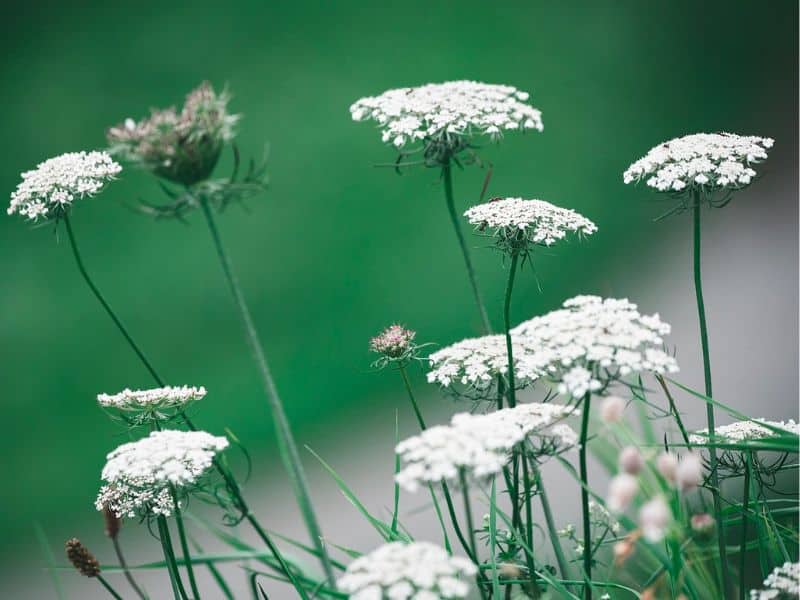
Carrots (Daucus carota) and onions are soul mates because these plants help each other flourish. Plants from the onion family are terrific for repelling common carrot pests like the dreaded carrot fly or carrot root fly, while carrots naturally deter onion fly pests or onion maggots. This pairing is great for protecting your carrot crop and onion crop at the same time.
These mutually beneficial plants can grow alongside each other in the same bed because onions take up space above the ground while carrots mainly develop underground. It is also very easy to distinguish these two plants from one another since they look very different.
Both of these plants flourish in full sun, and they require regular watering. Carrots and onions can be grown in the same soil type, but keeping the nutrient-rich soil nice and loose is best.
Chamomile
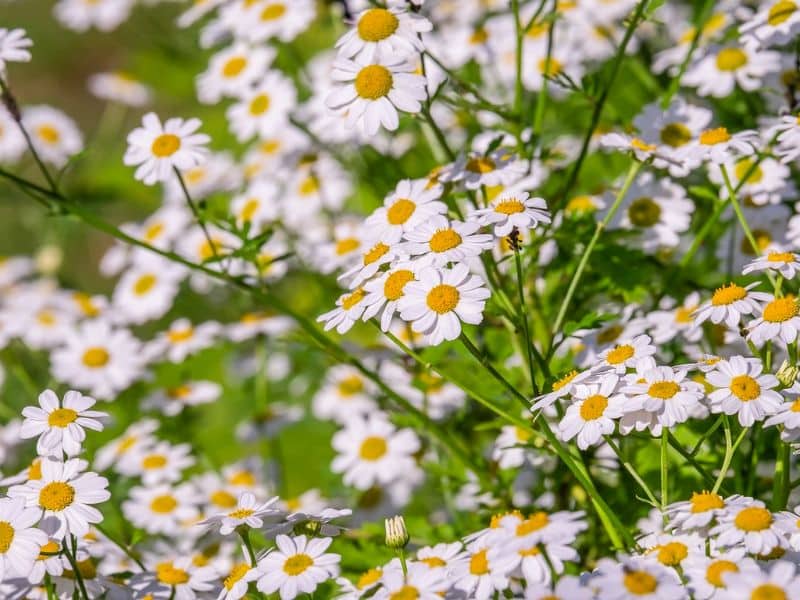
Chamomile (Matricaria chamomilla) is one of the best companion plants for onions to boost your onion yields or grow tastier onions. This herb is often used to produce a calming and soothing tea, and it can also be helpful for flavoring products like toothpaste or soap.
Chamomile has antibacterial and antifungal properties that can help reduce fungal diseases that attack onions or onion roots. These companion plants will also attract beneficial insects like wasps that could help control other pests that feed on onions. Many gardeners also believe that chamomile improves the taste and growth of onions grown nearby.
The chamomile herb grows up to 60cm tall, but the foliage isn’t too dense to obscure sunlight. These plants can be planted alongside or in rows next to each other. When these herbs bloom, they will produce many white flowers all over your garden, which can create a stunning effect, especially if your onions also have some lavender-colored or white blooms.
Summer savory
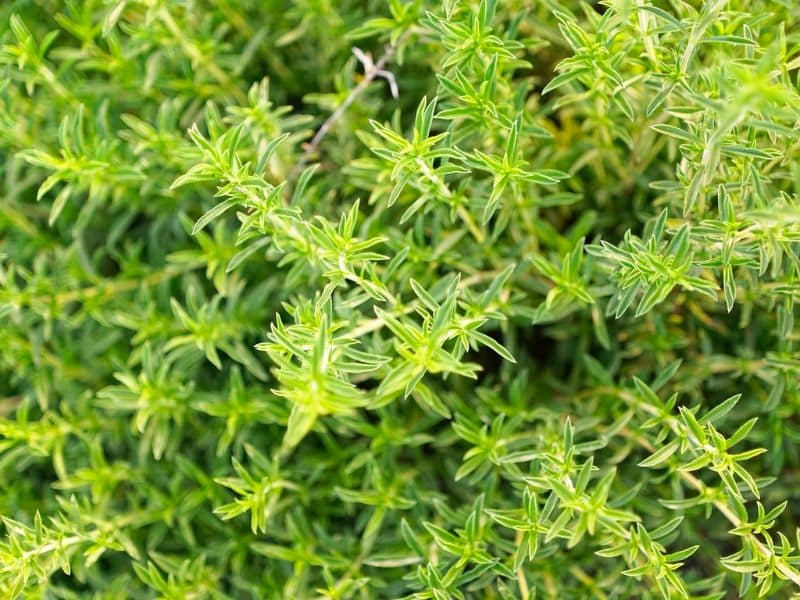
Summer savory (Satureja hortensis) are good companion plants to consider if you want to boost the growth of your onions. This culinary spice can also make onions taste a little bit sweeter, and this herb’s fragrance can also attract beneficial insects that could protect your onions.
The herb is often used as a seasoning in food dishes and has medicinal properties that can boost your health.
Planting this delicate herb around your onion plants in well-drained soil and direct sunlight is usually best. This herb typically grows 30 – 60 cm tall and can become bushy. Leave a little space between them and onion plants to keep them from overpowering the onions in your vegetable garden.
This ancient herb is relatively easy to grow but isn’t too drought-tolerant. It would help if you watered it a lot to keep the flowering plant in good condition.
Onion Companion Planting to Protect Vegetable Plants
Onions are often used to protect other vegetables from nasty insects that typically attack these foods. The scent of onions does a great job of masking the smell of different vegetables and is offputting to many insects. Here is a quick look at onion companion vegetables that will grow well alongside onion family members.
The Cabbage Family
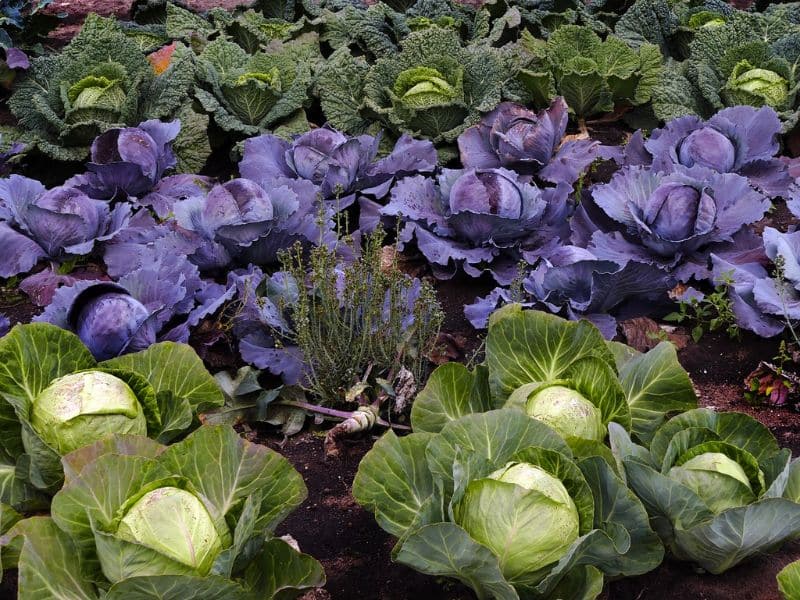
Almost all plants from the cabbage family (Brassicaceae) are good companion plants for onions. This includes cauliflower, kale, kohlrabi, cabbages, lettuce, broccoli, and Brussels sprouts.
There are several benefits of pairing onions with brassicas. Onions help repel pests like cabbage loopers and cabbage worms, weevils, flea beetles, maggots, and other pests like rabbits that might want to munch on your green veggies.
When growing brassicas plants alongside onions, it is usually best to plant them in rows with onions in one row and Brassicaceae in another. This will allow all your vegetables to get adequate sunlight and keep larger cabbage varieties from competing for space in the same garden bed.
It is usually best to grow onions around brassicas so the scent can repel pests on all sides.
Tomatoes
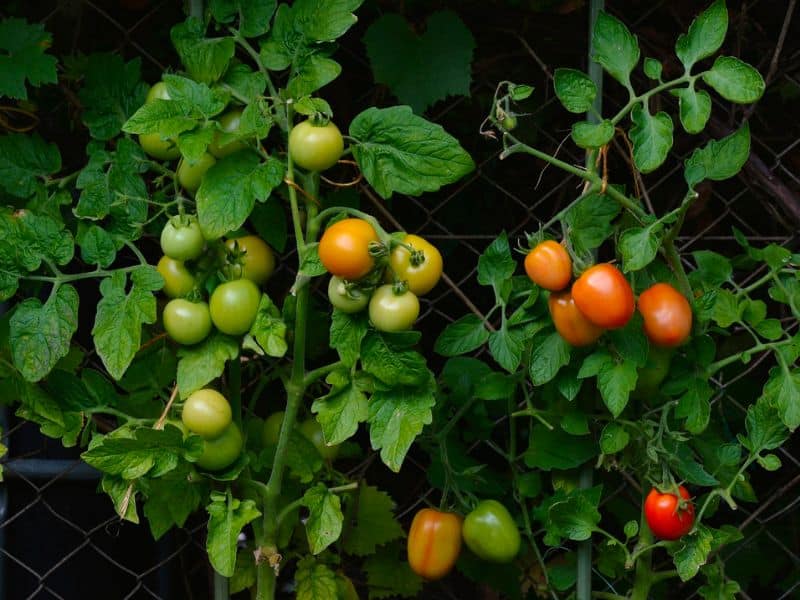
Depending on the variety, Tomatoes can grow from 6 – 20 feet tall. When planting onions next to tomatoes, it is usually best to grow onions on the south side of your tomatoes so your onions won’t fall under too much shade.
Tomato plants (Solanum Lycopersicum) are vulnerable to many garden pests. Tomatoes are great companion plants for onions because the onions repel pests like tomato hornworms, aphids, thrips, and many others.
You can grow any member of the onion family, including leeks, shallots, spring onions, green onions, or red onions, alongside tomato crops since they are all helpful for deterring pests.
Tomatoes and onions won’t compete for soil nutrients, and these vegetable plants grow best in well-draining soil with regular watering.
Related: Tomato Companion Plants
Strawberries
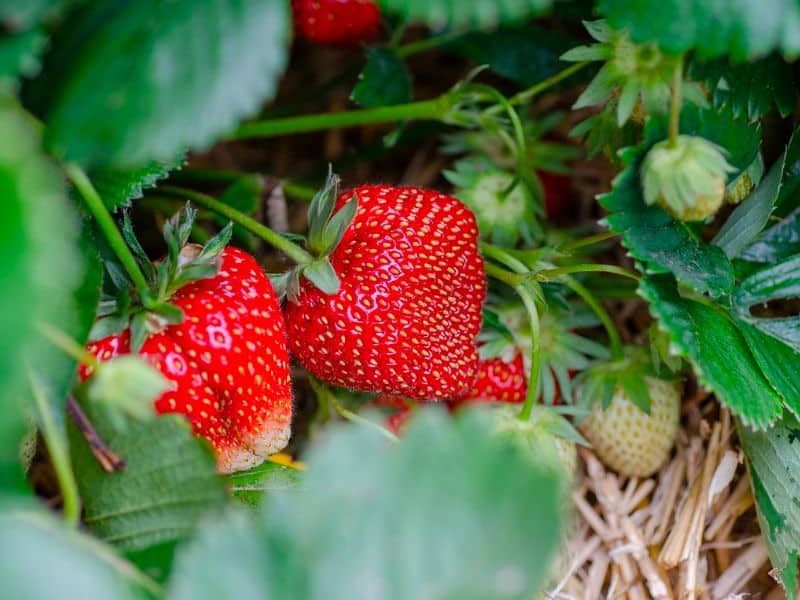
Strawberries (Fragaria x ananassa) and onions are good companions in the same garden bed because onions will deter aphids and other sap-sucking pests that can destroy a strawberry crop. The strong scent of onions can also repel other pests.
You can grow strawberries and onions alongside one another because they don’t compete for nutrients, and strawberries have a low stature that will not overshadow onions. Strawberries also need a lot of water and, as with onions, can grow well in clay soil types.
You also don’t have to worry about the onions affecting the taste of your strawberries. The juicy strawberries taste just as good alongside onions as alone.
Related: Strawberry Companion Plants
Melons
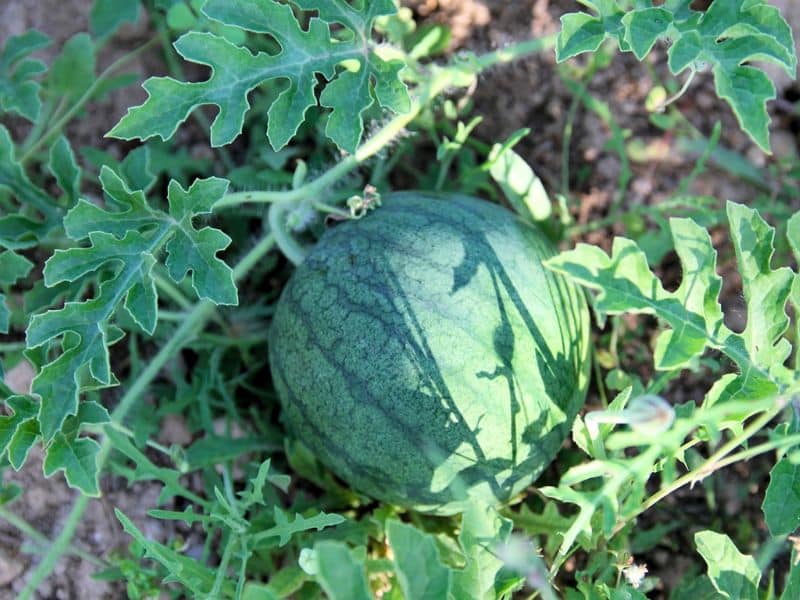
Melon varieties (Cucumis melo) like watermelon, cantaloupe, or honeydew are great companion plants for onions because the onions act as a natural deterrent that fights off insects that commonly attack these fruit plants. Melons can also attract beneficial insects that can protect your onion growth.
These vine plants occupy a lot of space in gardens because they grow large fruits, the vines produce large leaves, and they can spread out for great distances. You can grow melons next to an onion root crop but need to leave plenty of space for these vine plants to branch out and grow.
It is usually best to pair melons with larger onion varieties so the melon vines won’t overpower your onions. These companion onion plants prefer lots of sunlight but require quite a bit of water to grow healthy and juicy fruits.
Peppers
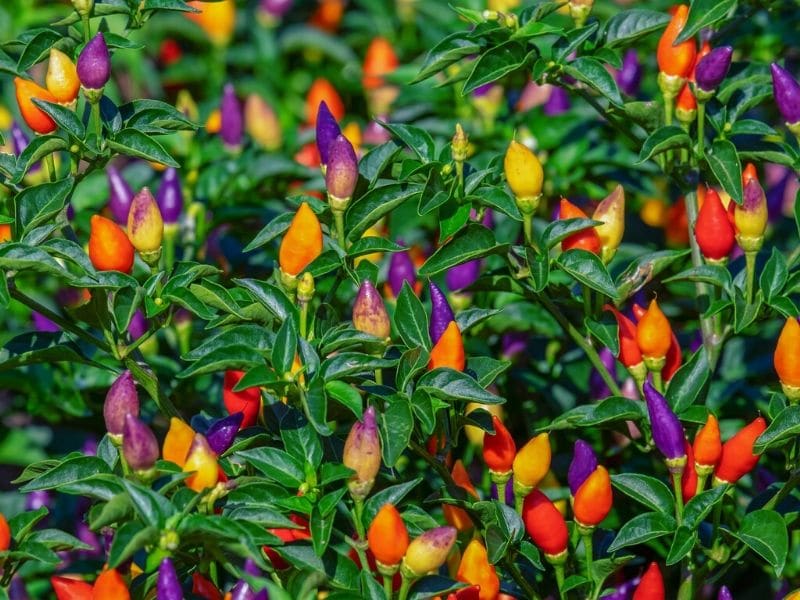
When you plant onions alongside peppers (Capsicum) you can boost your pepper yields because the onions will deter pests like aphids that often attack peppers. For optimal effect, it is usually best to pair onion varieties like garlic with peppers because these produce a strong scent that will surely mask the scent of peppers.
Peppers can grow quite tall, with a maximum height of up to 3 feet. To keep peppers from casting a shadow over your garlic, growing garlic on the east since of your pepper row is usually best. There should also be a lot of space between peppers and garlic since certain plants, like bell peppers, can take up a lot of space as they grow and bush out.
Worst Companion Plants for Onions
Not all plants are too friendly or compatible with onions. Some plant varieties can compete for nutrients, while others might attract insects that could ruin your onion crop. Let’s take a quick look at some plant combinations to avoid when you are growing onions.
Asparagus
Planting onions and asparagus creates competition. This includes all members of the onion family and asparagus onions. Asparagus and onions compete for nutrients. The growth of both of these plants will be stunted if you grow them together in the same bed. Onions can completely ruin young asparagus plants or your ability to get an asparagus yield in the future.
Other onion plants
It is also best to avoid planting onions with other onion plants. Growing too many onion family plants together can attract common onion pests like onion maggots and onion flies. For optimal growth and protection for your onions, it is usually best to scatter them around in the garden or keep varieties like garlic, leeks, shallots, and others apart.
Legumes
Legumes (Fabaceae) and onions are not compatible. This is because onions kill bacteria that legume varieties like beans and peas need to grow. When you add onions to your legume garden bed, the legumes can struggle to grow or develop all sorts of diseases.
One thing to remember about legumes is that they restore nitrogen levels in the soil. Onions are nitrogen feeders that deplete your soil’s nutritional levels. Adding legumes to a garden bed that used to have onions is a great way to restore the soil nutrients so future root crops can flourish.
Final Thoughts
We hope this guide helped you find some good companion plants for your onion vegetable garden and that these combinations will result in fewer pests. If you want to learn more about other plants to combine when growing your own food, then look at some of our other guides. With these guides, you can find all the latest and best plant growing and pairing tips.
Up next:

